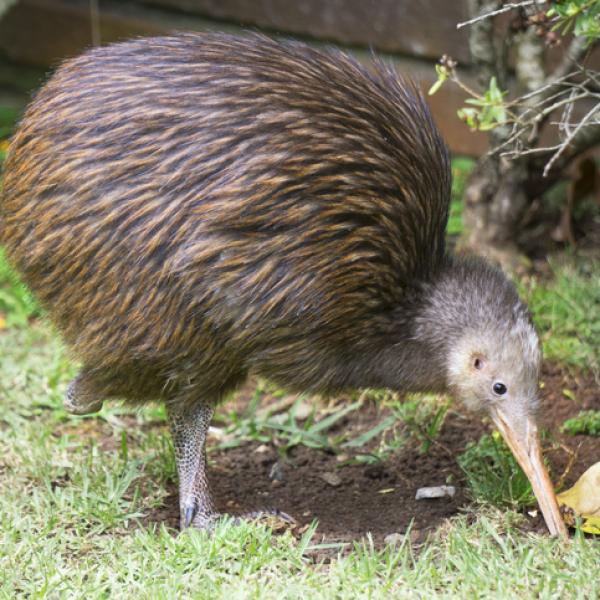These are the animals that usually bite you but can't fly
In summer, bites by mosquitoes, black flies and many other families of flying insects skyrocket. However, the summer months are also especially propitious for other arthropods that, although they do not fly, also sting. In Aragón, ticks, bedbugs, fleas and lice can be just as annoying or more, and in some cases they can also transmit diseases.
"Whether they fly or not, all arthropods are cold-blooded," recalls Javier Lucientes, professor of Animal Pathology at the Faculty of Veterinary Medicine at the University of Zaragoza. "Unlike mammals or birds, which are capable of regulating our body temperature at all times, arthropods need high temperatures to be able to develop their life cycle, which is why they are most active in the summer months."
However, there are two exceptions: lice and bed bugs. "Lice have a flat body and what they do is stick to their host and take advantage of the heat it gives off," explains Lucientes. "In addition, they also use their host's hair to protect themselves from the outside, but it is precisely in summer when humans usually wear less hair and that harms them and means that in the hot months there are fewer lice problems."
As for bed bugs, this expert recalls that what they do is live inside homes in the most remote places close to beds. “In houses, the temperature can vary, but it is more or less constant and allows bedbugs to remain active throughout the year. Of course, also in summer”, he points out.
In all cases, these stinging but flightless arthropods are hematophagous, that is, they bite animals or people because they need to feed on their blood.
ticks
Ticks are hematophagous arachnids that parasitize a large number of wild animals and also domestic animals. Also, they can bite humans. Their size ranges from the head of a pin (the larvae) to that of a bean (the females full of blood).
They are on the ground, usually covered in grass or bushes, and each species has different habitat preferences (forests, meadows, thickets...). Although most ticks are active in the warmer months, some are active during the winter as well.
Some species may be infected with a wide variety of pathogenic organisms that are transmitted during the blood-feeding process. That is why the best way to avoid the spread of these diseases is to avoid tick bites.
To achieve this, it is recommended that people who are in contact with nature follow simple advice such as wearing long sleeves and long pants, always trying to wear closed boots with socks that cover the bottom of the pants, wearing light-colored clothes ( allows ticks to be detected more easily), avoid contact with vegetation as much as possible... If you go out into the countryside with a pet, it is advisable to apply some antiparasitic recommended by a veterinarian.

In addition, at the end of the activity it is recommended to examine the whole body (especially in the case of children) to detect if there has been a tick bite, especially checking the armpits, groin, hair, the area behind the knees, the inside and the outside of the ears, the navel, around the waist... Pets should also be inspected.
Most tick-borne diseases require the animal to attach and take a blood meal for several hours. That is why it is very important to remove it before the person becomes infected and that is why, if any are found, they must be removed as soon as possible. To do this, use blunt-edged, fine-tipped tweezers. If one is not available, it can be removed with the fingers using thin gloves.
You have to try not to crush it, hold it firmly as close as possible to the skin and gently pull it up. Then you have to clean the wound well with soap and water or apply an antiseptic and wash your hands well. In the following days, you should be on the lookout for a fever or a skin rash, and if that happens, you should go to the doctor saying that you have suffered a tick bite.
bedbugs
Bed bugs are parasitic insects that prefer human blood and are nocturnal, although not exclusively. During the day they take refuge in burrows located near the resting areas and at night they come out to feed on the blood of their victims.
The adult specimens have an oval and flattened shape, similar to an apple seed; its color varies from reddish to brown; and measure between 4 and 7 millimeters.
Bed bugs feed on the most exposed areas of the skin (neck, arms, shoulders, back...) and the bites usually cause severe itching, swelling and inflammation, with reddish welts often located in a line in the area where they are observed. have produced. To treat them, it is recommended to wash them well with soap and water and not scratch them to prevent them from becoming infected. In case of strong itching, you can buy products that relieve it at the pharmacy, and if an infection occurs or the itching is difficult to bear, you should go to a health center.
As the lesions that bedbugs produce on the skin are similar to those of other insects such as ticks, lice or fleas, to detect the problem it is necessary to find traces of their presence in places such as the folds of the mattress, the headboard and the bed base, bedding, bedside tables and cabinets, carpets, moldings, cracks, joints, electrical and electronic equipment...
Bed bugs are a very persistent plague and difficult to eliminate, since in addition to taking refuge in very remote hiding places, they can go for more than a year without feeding. For this reason, to eliminate the presence of these animals, it is necessary to go to a technician with experience in treating this type of pest.
The fleas
Fleas are small insects between 1.5 and 3 millimeters in size that are easy to recognize thanks to their flattened body and great jumping ability. There are a large number of species, each of them specialized in a certain host animal, although they can also parasitize others.
In the urban environment, the most common are the dog flea ('Ctenocephalides canis') and the cat flea ('Ctenocephalides felis'), which sometimes cause infestations in the houses where these pets live. In rural areas they are frequent where there are animals.
The flea bite is characteristic, since it forms a red swelling in the shape of a circle with a dark point in the center and several usually appear at the same time forming a straight line. In sensitive people or children, they often cause hives and itchy pimples. Fleas can remain on clothes even after several washes, so to eliminate them it is advisable to do so at high temperatures or even by freezing the clothes.
As for pets, it is common for them to suffer from allergic dermatitis (a process that can present important complications) caused by fleas, so it is recommended to take them to the veterinarian to apply an antiparasitic product and check them periodically, especially in the months Of summer.
lice
According to their location on the person, three types of lice are distinguished: the head louse ('Pediculus humanus var. Capitis'; the body louse ('Pediculus humanus var. Corporis'); and the pubic or crab louse ( 'Pthirus pubis') As already indicated, and unlike what happens with many other hematophagous insects, summer is the time of year when lice are less active, since people tend to have shorter hair .
Head lice mainly affect children between 3 and 10 years of age, with a preference for females, and their presence is independent of the sociocultural level. This louse lives on the scalp (especially on the nape of the neck and behind the ears), while the nits are attached to the hair with a viscous substance and close to the scalp. Its transmission is carried out by direct contact and through brushes, combs, hats... This type of parasitism usually manifests itself with benign symptoms such as itching and a tingling sensation, it is rarely associated with complications or it is a transmitter of other diseases. Occasionally, the scratches and scabs that occur as a result of scratching can favor the appearance of minor infections.
For its part, the presence of the body louse is usually associated with disadvantaged socioeconomic status that often entails poor hygienic conditions. It is transmitted by direct body contact or through infested sheets or clothing. The infestation is usually located around the neck, trunk, armpits, waist, buttocks, groin and other areas to which the insect periodically moves from clothing to feed. The most characteristic symptoms of this type of pediculosis are intense itching and the development of an allergic reaction and hives in response to insect bites, as well as the presence of scratches and even inflammatory lesions. This type of infestation constitutes an important vector of transmission of certain infectious diseases.
As for the pubic louse, it is transmitted mainly by sexual contact. The crab lice differs from the previous ones in its morphology (more rounded appearance) and its location, being initially found in the genital area, where it usually remains, and eventually adhered to the hair of other areas of the body. Under favorable conditions, it appears to be able to survive outside the host for up to 36 hours. The main symptom of this pediculosis is itching (especially at night) and occasionally, the development of allergic reactions, with the appearance of asymptomatic bluish-grey spots on the lower part of the trunk and the inside of the thighs also being characteristic.


